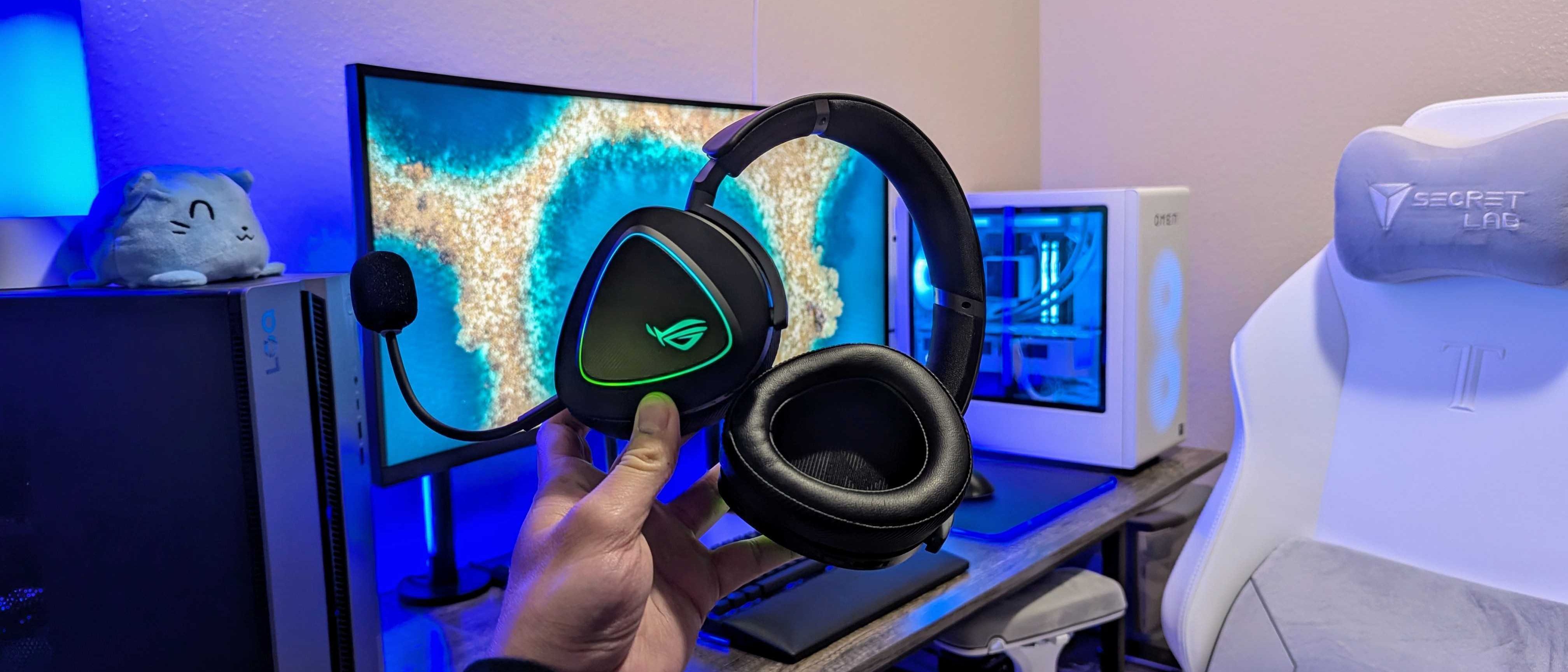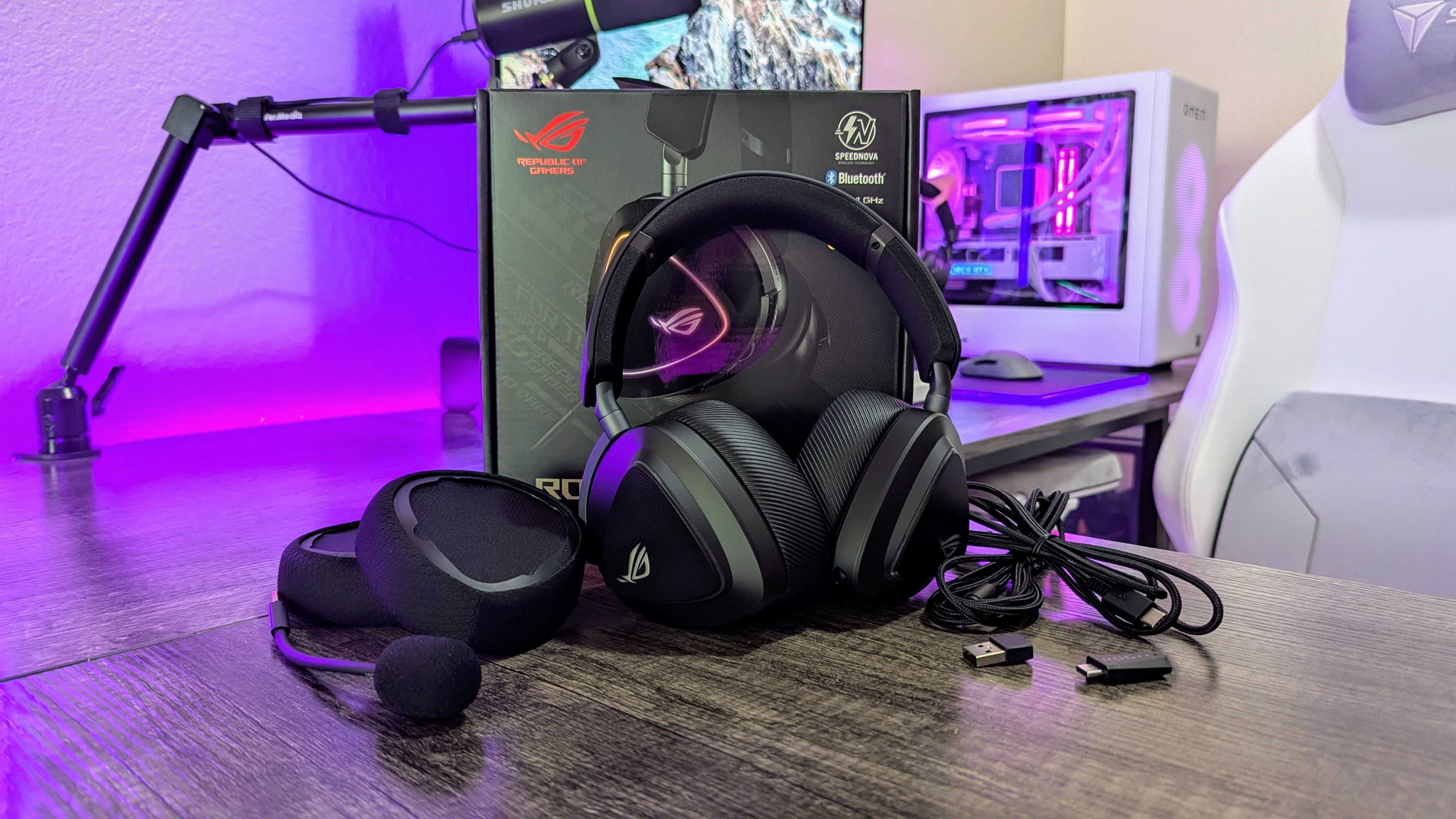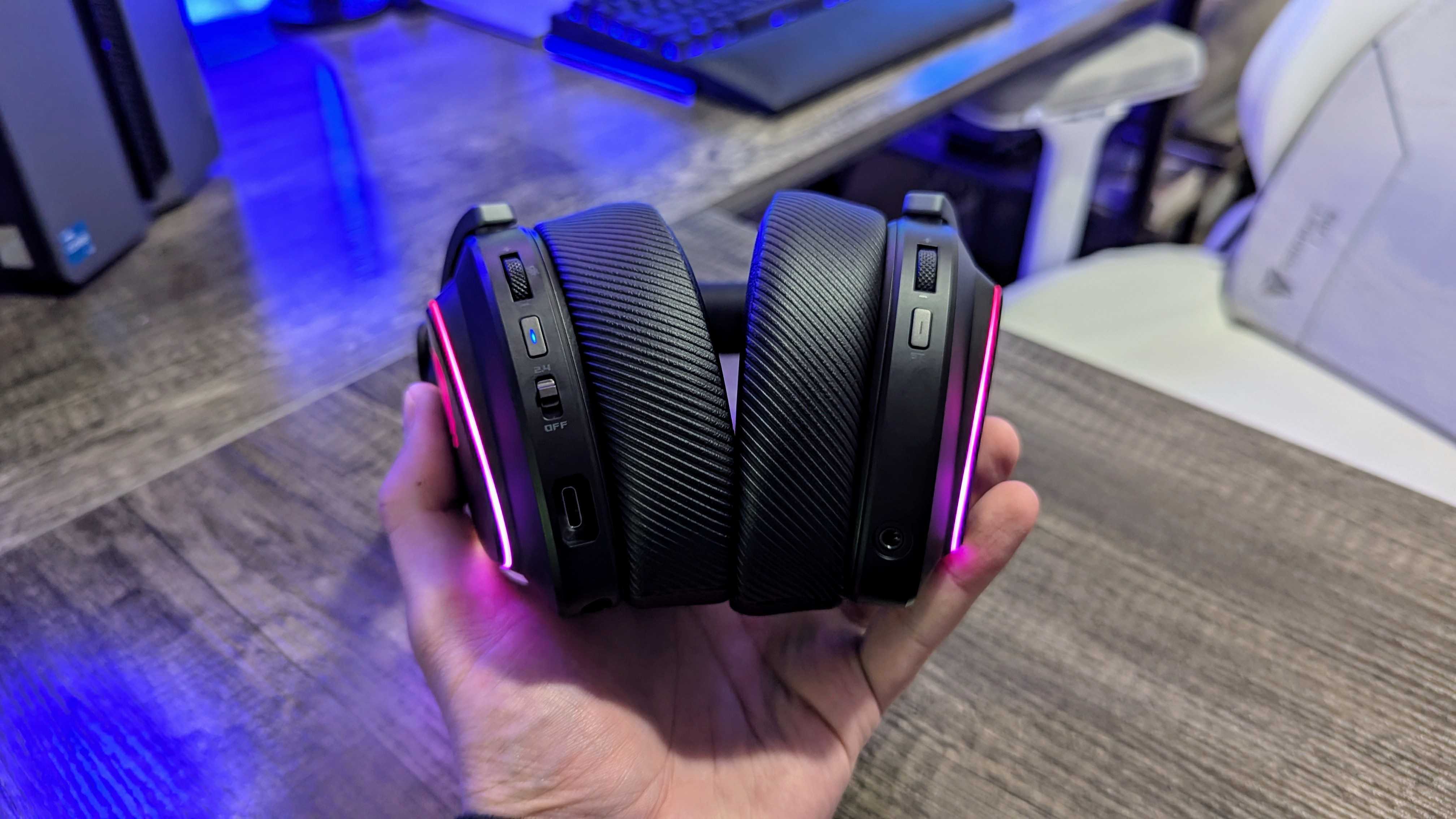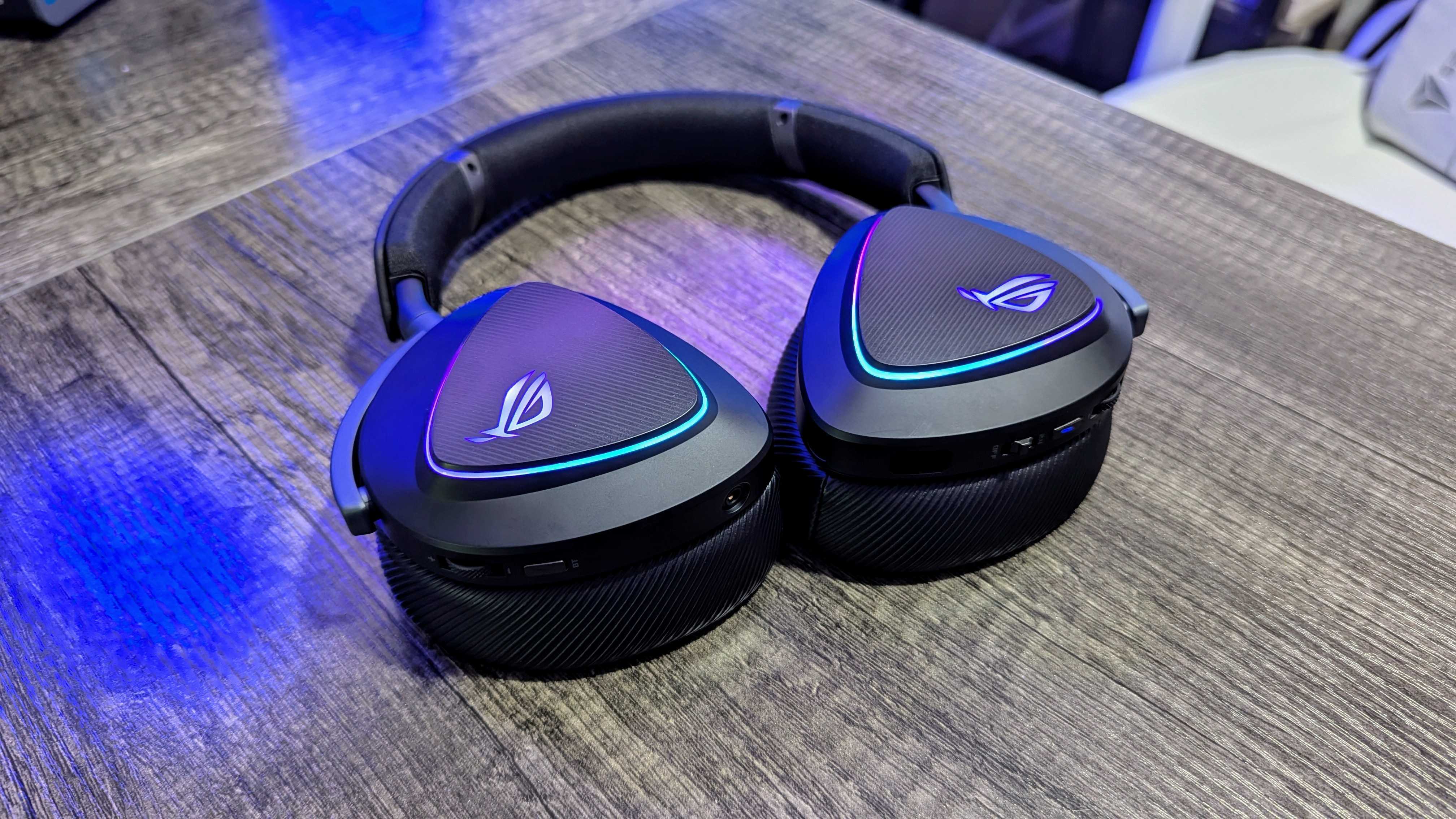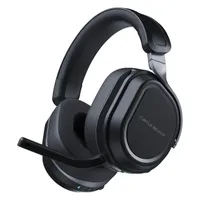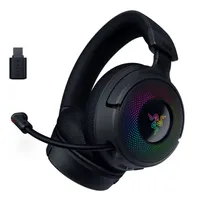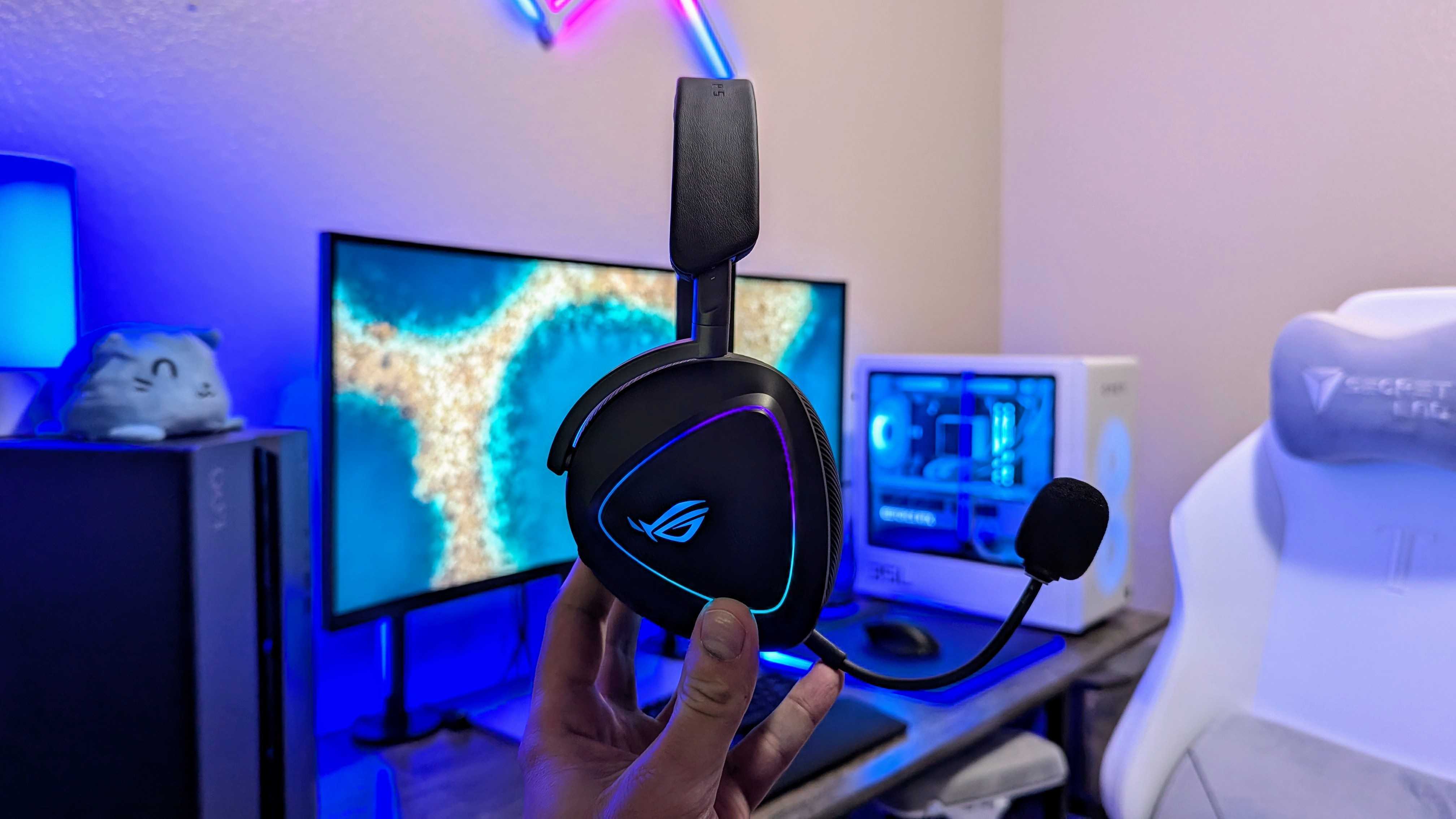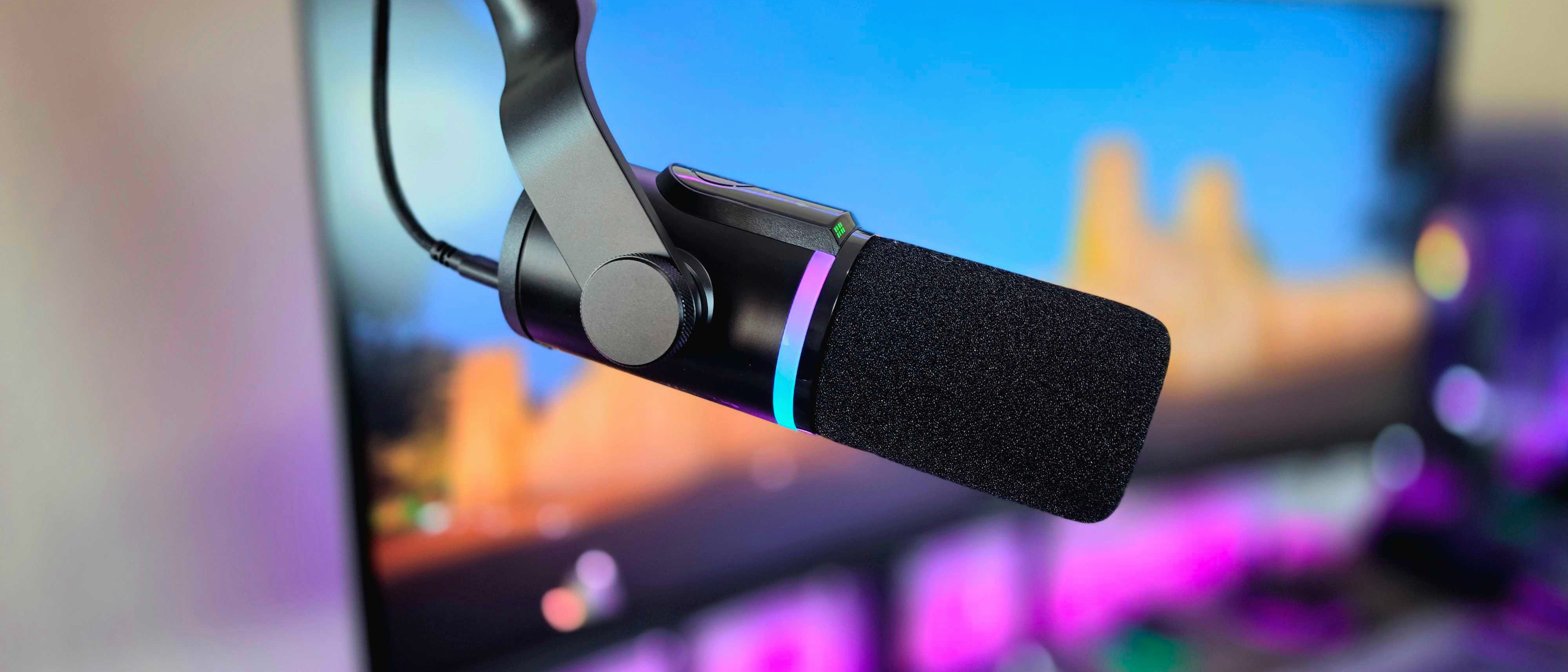Windows Central Verdict
The ROG Delta II is ASUS' most premium wireless gaming headset, boasting the same triangular design as its less expensive siblings. It's a very good headset, with reliable performance and fantastic, customizable audio, and it can connect to multiple devices simultaneously. The Delta II won't be the best fit for every head or setup, and all those physical controls can be confusing, but you won't be disappointed.
Pros
- +
Excellent and highly adjustable audio experience
- +
Unique approach to dual-device audio streaming
- +
Reliable, long-lasting battery
Cons
- -
Not the best fit, especially with smaller heads
- -
Average microphone
Why you can trust Windows Central
I've used a lot of gaming headsets, but ASUS has never been the company I've gone to in search of great audio.
I'll have to change my thinking moving forward after using the ASUS ROG Delta II for the last few weeks, a premium wireless gaming headset designed for Windows PC.
While priced a little high, these cans still feel like a solid value with excellent audio and a healthy suite of features. They also stand out thanks to those triangular earcups and RGB lighting.
The ROG Delta II doesn't feel quite like its price tag would suggest, though, and there are some weaknesses mixed into its bag of strengths. None of those weaknesses are enough for me to dismiss this headset as a great option for any PC gamer.

Whether I'm gaming on Xbox or PC, listening to music, or participating in an endless series of video conferences and calls, I need a great headset covering my ears. Audio quality, comfort, battery life, features — it's all vital when evaluating every headset or pair of headphones that comes across my desk.
This review was made possible thanks to a review sample provided by ASUS. ASUS had no input nor saw the contents of this review prior to publication.
ROG Delta II review: Cheat sheet
- What is it? A premium wireless gaming headset designed primarily for Windows PC.
- Who is it for? PC gamers looking for a unique-looking, comfortable wireless headset with excellent audio quality and plenty of software features.
- How much does it cost? The ASUS ROG Delta II costs $229.99 at ASUS. This headset is slightly more affordable elsewhere, going for $259.99 at Best Buy or $259.99 at Amazon, but is often seen on sale.
- What did I like? The audio experience, the versatile software, and the unique design.
- What did I not like? The overall fit and finish, the average microphone, the lack of wireless Xbox support.
ROG Delta II review: Pricing and specifications
The ASUS ROG Delta II is positioned on the more premium end of the wireless PC headset segment, with a retail price of $229.99 at ASUS.
That's the most you should pay for it anywhere, but this headset is oddly priced higher at other retailers. The ROG Delta II is listed for $259.99 at Amazon and $259.99 at Best Buy, a $30 upcharge for seemingly no reason.
That being said, this headset does often seem to be discounted at those retailers to match ASUS' default pricing (or even best it), so keep an eye out for that.
All the latest news, reviews, and guides for Windows and Xbox diehards.
Spec | ASUS ROG Delta II |
|---|---|
Drivers | 50mm, titanium-plated diaphragm, 20-20,000Hz frequency response, 32 Ohms impedance, up to 24-bit resolution & 96KHz sampling rate (via 2.4GHz wireless) |
Microphone | 10mm, super wideband, unidirectional, detachable, 100-10,000Hz frequency response |
Hardware features | Replaceable D-shaped earcups, ASUS Aura Sync RGB lighting, DualFlow Audio simultaneous playback, dual physical control sets |
Software features | ASUS Armoury Crate & Armoury Crate Gear software support, 8-band audio equalizer, virtual 7.1 surround sound |
Connectivity | Wireless via ASUS ROG SpeedNova 2.4GHz (USB Type-C dongle), wireless via Bluetooth, wired via 3.5mm audio jack |
Battery | Up to 110 hours w/ RGB lighting disabled, USB Type-C fast charging |
Weight | 318g (0.7lbs) |
Warranty | 1-year limited |
In the box, you'll find the ASUS ROG Delta II wireless gaming headset, the detachable boom microphone, a USB Type-C ASUS ROG SpeedNova 2.4GHz wireless dongle, a USB Type-C to USB Type-A adapter, a USB Type-C to USB Type-A charging cable, a 3.5mm audio cable, and two sets of earcup cushions (one fabric, one faux leather).
There's no carrying/travel bag in the box, but otherwise, that's a great selection of included accessories, helping the ROG Delta II feel like a better value.
ROG Delta II review: What I like
You can pick out any ASUS Delta gaming headset from a distance thanks to its distinct earcup design. ASUS describes it as "D-shape," but these earcups are triangular. The idea? A more comfortable and flexible fit for your ears.
With tasteful and customizable RGB lighting outlining those triangular earcups, the ROG Delta II can stand out without being distracting. There's also a helpful LED on the microphone that glows red when you're muted.
You'll find a lot of physical controls on the Delta II split across both earcups, and it's part of ASUS' unique approach to dual-mode connectivity. This headset can connect to two devices via ASUS' 2.4GHz wireless and Bluetooth simultaneously, and each connection has entirely separate controls.
All those controls can be confusing, and it may take you a while to fully grasp them, but it does give you a finer level of control over both your audio streams.
On the left earcup, you'll find the power switch (that handles the default 2.4GHz connection), a volume wheel that doubles as mute/unmute button, and a multifunction button for media playback controls and RGB lighting toggling.
On the right, you'll find a second volume wheel that specifically controls volume for your Bluetooth device, as well as a second multifunction button for toggling Bluetooth on and off, media playback controls, and phone call controls.
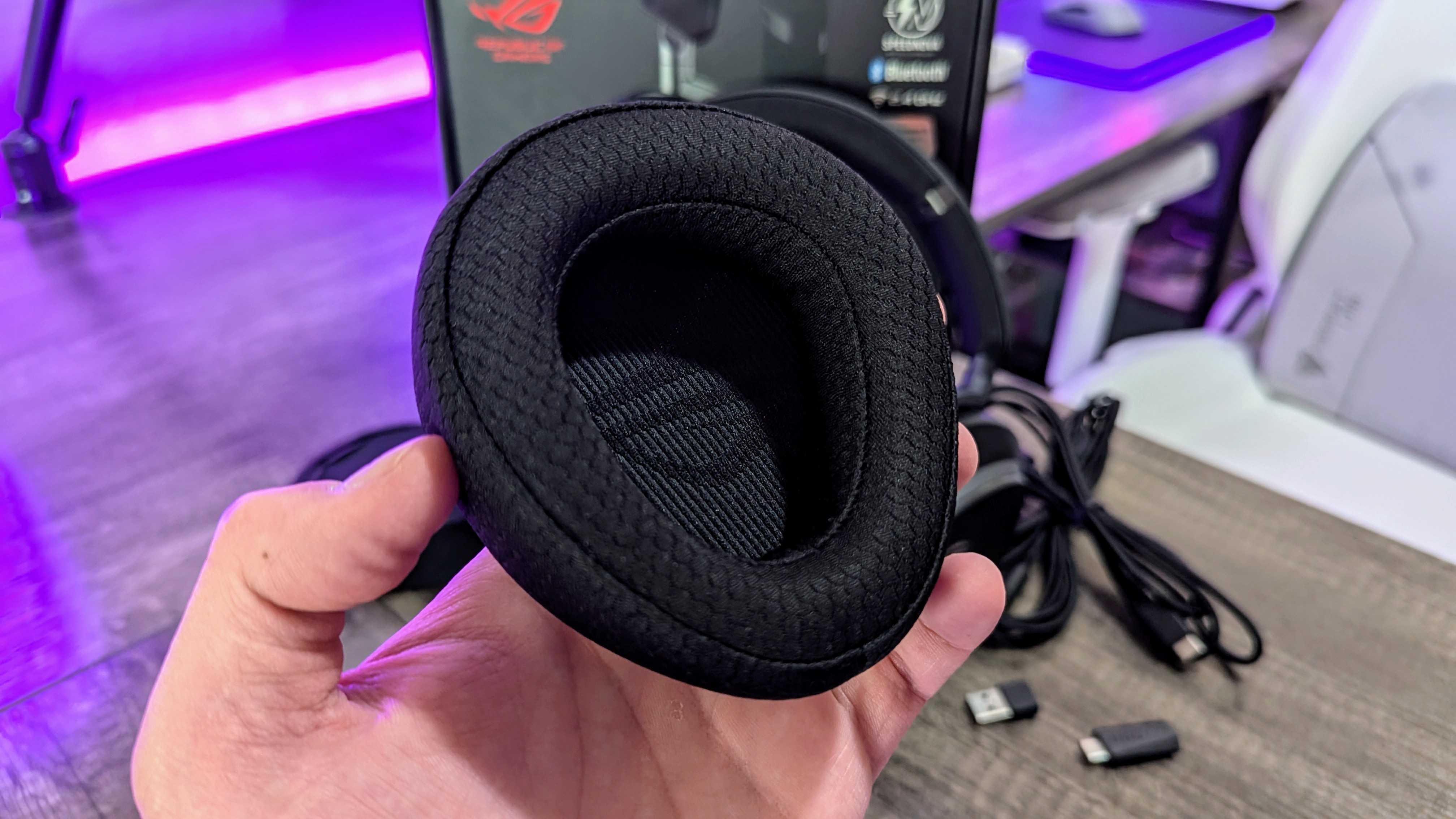
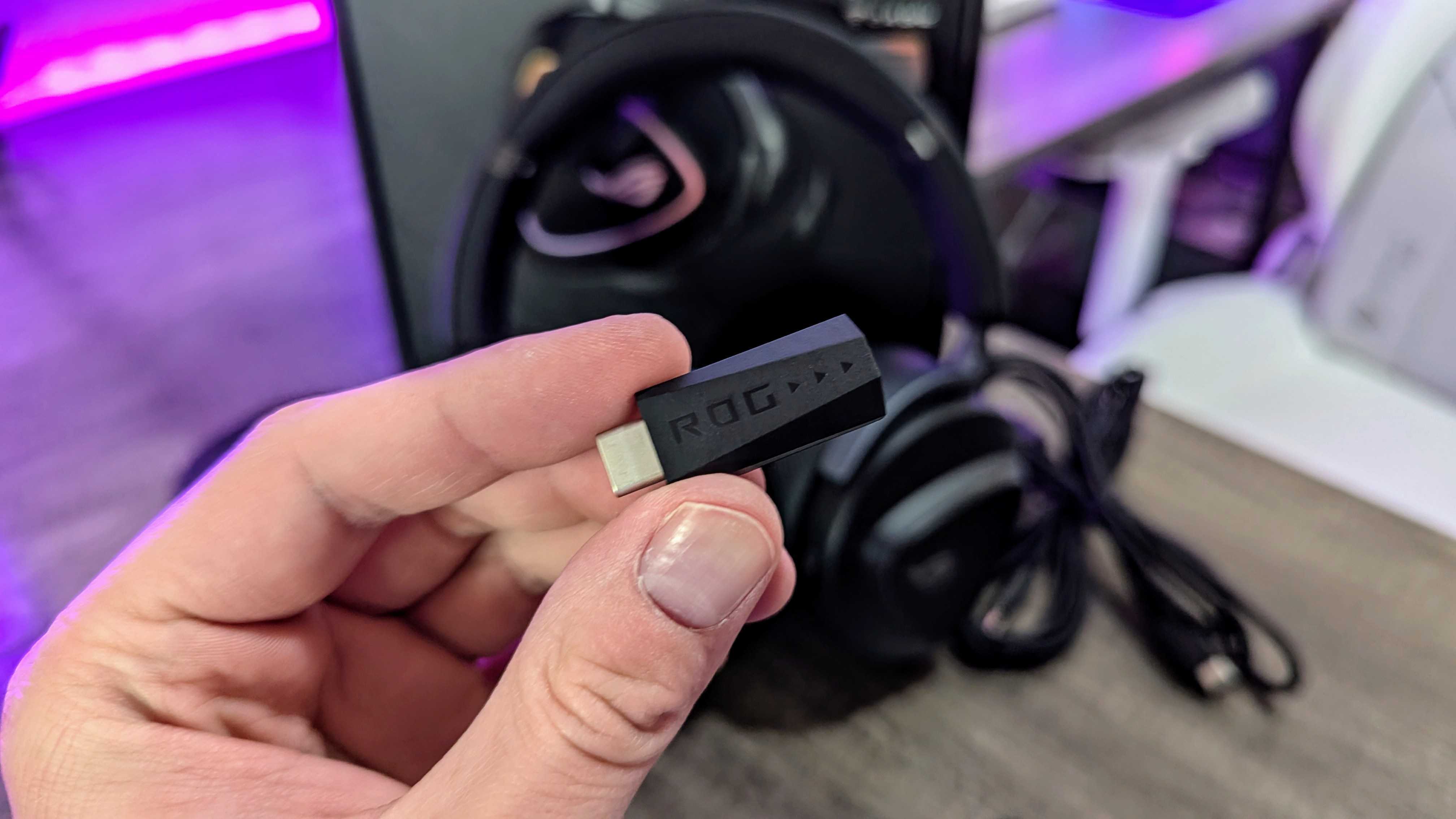
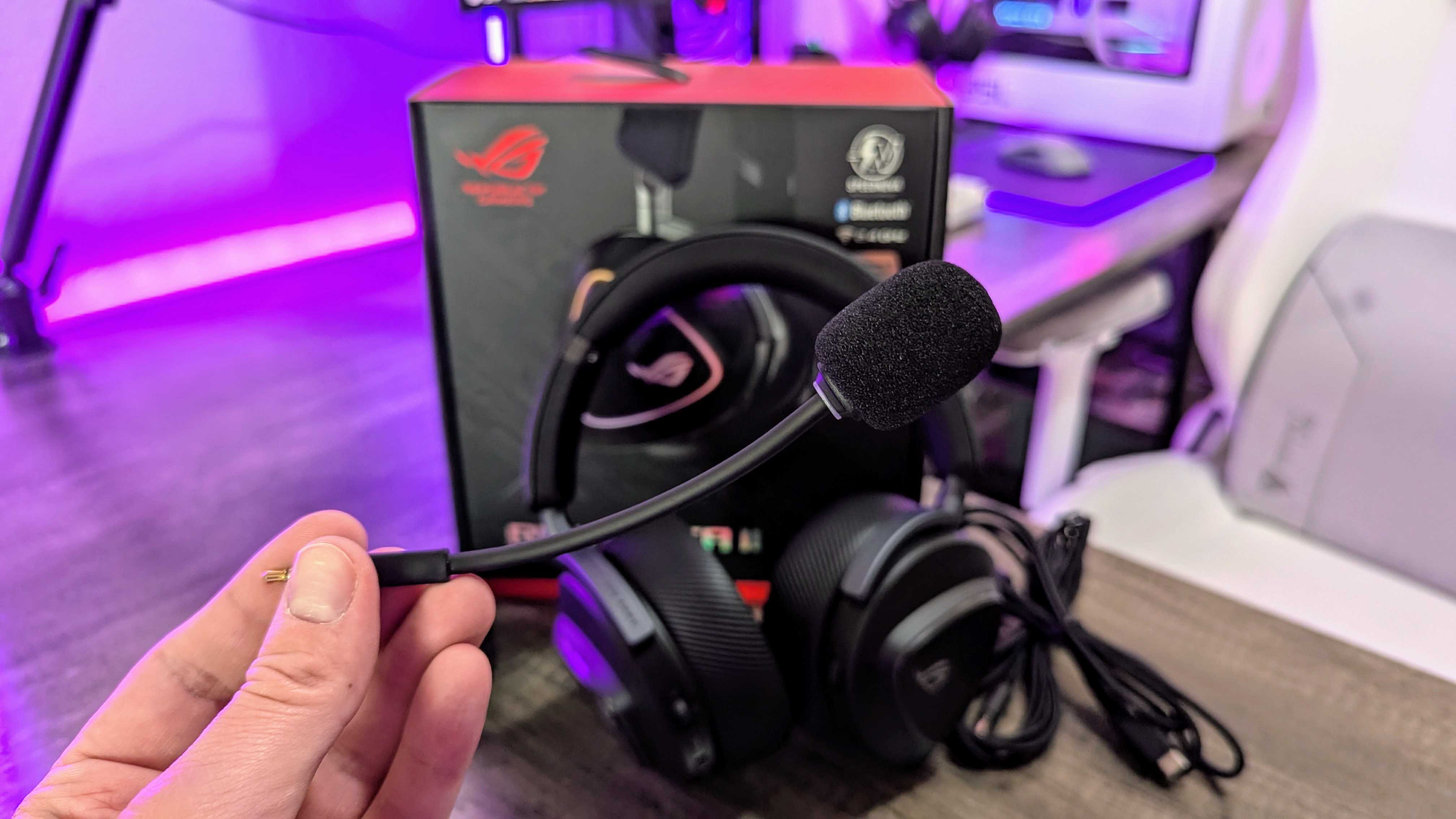
It works well and enables true multi-source audio streaming. You can listen to two different songs at once, if you'd like, but most people will probably have game audio on 2.4GHz and music or calls on Bluetooth. Either way, you don't have to worry about messing up one connection by controlling the other, and that flexibility is worth the mess of controls.
Speaking of wireless performance, the ROG Delta II was also great for me. I didn't encounter any dropped connections, stutters, or interference, even when wandering around my home while connected to two devices at once.
ASUS quotes up to 110 hours of usage, too, but that's under optimal settings. You likely won't ever see quite that level of endurance, but battery life was still excellent for me with RGB lighting enabled and dual connectivity. You can also fall back on the 3.5mm audio jack if you do run low on power.
ASUS did an admirable job tuning these titanium-plated 50mm drivers, too. The ROG Delta II has a detailed, clear, neutral sound profile that easily adapts to video games, music, movies, voice calls, and more.
Low-end bass is punchy without overwhelming the mids and highs, while mids are slightly subdued compared to treble. The ROG Delta II isn't the most dynamic or wide-sounding headset, with average separation, but this is a balanced sound that provides a great foundation you can shape to your needs — and ASUS lets you do exactly that.
You can install the full ASUS Armoury Crate software suite, but the ROG Delta II has its own lightweight "Armoury Crate Gear" app if this is your only ASUS product; I appreciate having that option a lot.
There are a lot of settings here. You have a variety of general sound optimization profiles, an 8-band equalizer with multiple presets, and toggles for the virtual 7.1 surround sound, reverb, bass boost, voice clarity, and compressor.
I left all those toggles alone to preserve the ROG Delta II's flexible acoustics (I listen to a lot of music), but that gives you a lot of utility for tuning this headset to your specific gaming needs.
Elsewhere, you'll find customization options for the RGB lighting embedded in the earcups, various power settings, a basic channel mixer, options to change the resolution and sampling rate, and a handful of basic options for the microphone.
ROG Delta II review: What I don't like
I wasn't convinced the triangular earcups of the ROG Delta II would make a difference, but they do actually make for a surprisingly comfortable and spacious fit. No, the ROG Delta II's comfort flaws rest elsewhere.
At 318g, this is a relatively light gaming headset, and that's all thanks to its plastic build. I was never concerned the ROG Delta II would ever fall apart on me, but the headband is thin and its cushion subsequently restrained.
This headset also has a really light clamping force, making it prone to move around over time. As an added consequence, those with smaller heads may struggle to find a secure and comfortable fit.
I'll happily praise ASUS for including two separate earcup options in the box, letting you choose between breathable fabric or soft faux leather, but it can be a little finicky to replace the earcups.
The detachable, unidirectional microphone is decidedly average, too. It's more than usable enough for game chats and video conferences, but you'll notice the loss of clarity, depth, and voice isolation compared to the best headset microphones.
Despite this headset's unique dual-device audio streaming feature, it's not the best multi-platform accessory. The ROG Delta II's software is also PC-only, so you won't be able to customize your settings or audio from your phone. There's also no wireless Xbox support, so the ROG Delta II is disqualified from joining our list of the best Xbox headsets.
On top of that, you can get really good wireless gaming headsets for $200 or less, so the ROG Delta II may not feel like a good value if you're not going to use that multi-source audio streaming feature.
ROG Delta II review: Also consider
Turtle Beach Stealth 700 (Gen 3)
Buy now: $199.99 at Amazon
Our current top recommendation for a wireless gaming headset is this, which works across every platform imaginable with great comfort, audio, software, and battery life. It's the best, and it even costs less.
Windows Central review ⭐⭐⭐⭐⭐
👉See at: Amazon.com or BestBuy.com
Razer Kraken V4
Buy now: $179.99 at Best Buy
This more affordable wireless gaming headset may not boast multi-source audio streaming, but it still offers great performance, excellent audio, a solid microphone, and a beautiful RGB-lit design that connect to your PC, mobile devices, and more.
Windows Central review ⭐⭐⭐⭐½
👉See at: BestBuy.com or Razer.com
ROG Delta II review: My final thoughts
✅You should buy this if ...
- You need a headset with multi-source audio streaming.
- You value having separate controls for 2.4GHz and Bluetooth.
- You fancy the triangular design and its RGB lighting.
❌You should not buy this if ...
- You're looking for the best possible value (or at least Xbox support).
- You have a smaller head and need a tighter headset.
It won't take much shopping for a wireless gaming headset to discover that a lot of the best options are available in the $200 price range, and the ROG Delta II is diving into that frenzied fray from the more expensive end of the spectrum.
This headset does put up a great fight, with its D-shaped earcups offering surprising comfort, and its 50mm drivers delivering balanced and detailed sound. Capable software lets you tweak that sound to your heart's desire, too, and you don't have to stress about battery life even with the RGB lighting enabled.
The ROG Delta II possesses one unique feature to catch your attention, though, and that's multi-source audio streaming with two entirely separate control setups for 2.4GHz wireless and Bluetooth. Not all will need this feature, but some will find immense value in it.
If you're in the former group, you'll likely be able to find a better option elsewhere. For many, though, the ASUS ROG Delta II will be a dependable companion for $229.99 at ASUS.
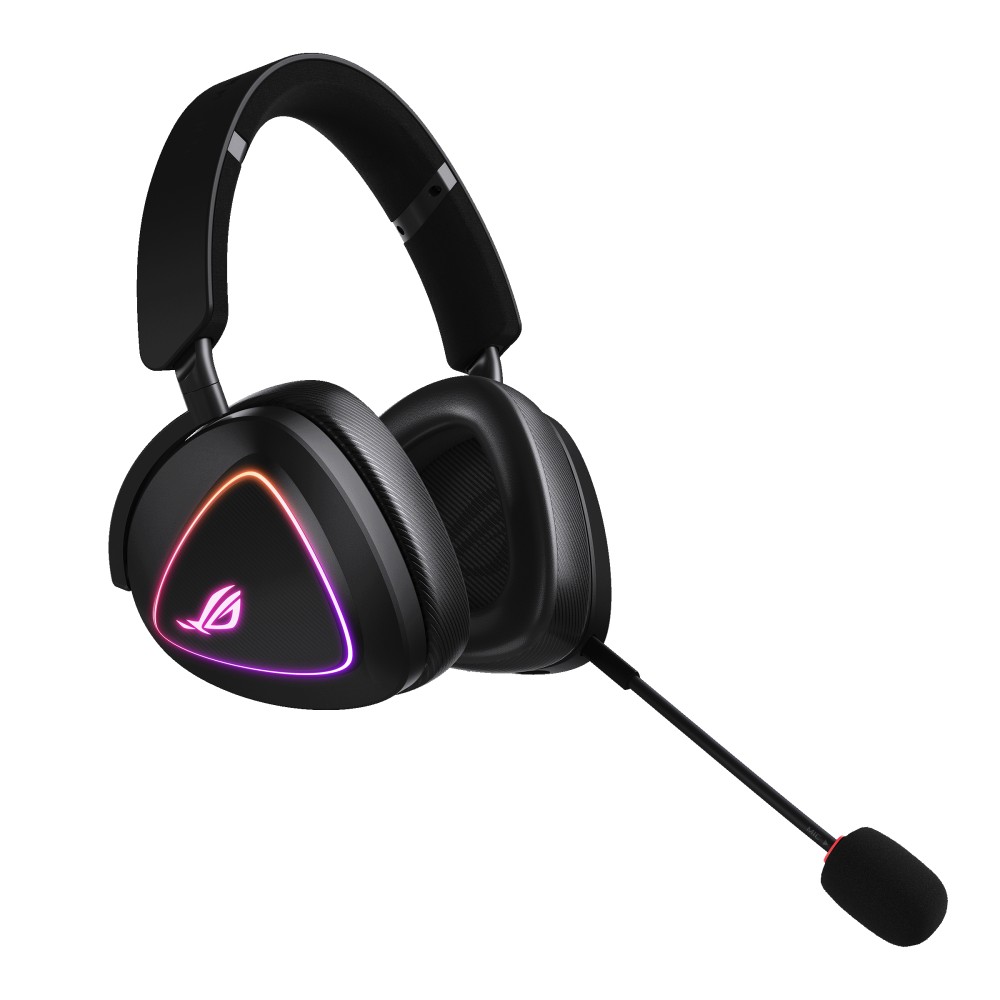
This premium wireless gaming headset surpassed my expectations with its odd triangular design, delivering great performance, audio, and endurance in a lightweight package. Competition is fierce at this price range, though, so the ROG Delta II is going up against some real heavy hitters.

Zachary Boddy (They / Them) is a Staff Writer for Windows Central, primarily focused on covering the latest news in tech and gaming, the best Xbox and PC games, and the most interesting Windows and Xbox hardware. They have been gaming and writing for most of their life starting with the original Xbox, and started out as a freelancer for Windows Central and its sister sites in 2019. Now a full-fledged Staff Writer, Zachary has expanded from only writing about all things Minecraft to covering practically everything on which Windows Central is an expert, especially when it comes to Microsoft.
You must confirm your public display name before commenting
Please logout and then login again, you will then be prompted to enter your display name.
